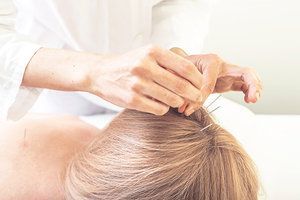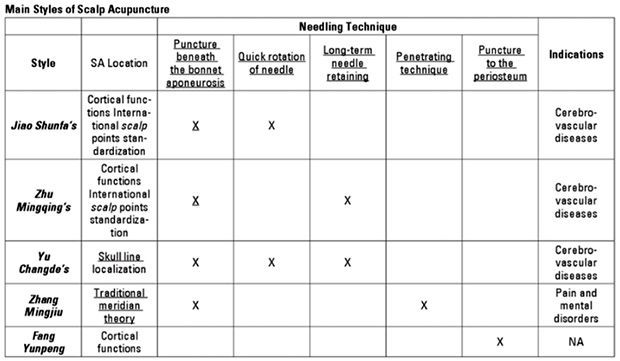Whether you accept it, avoid it or live somewhere in between, insurance coverage has become a defining issue for our profession. Patients increasingly expect to use their benefits, practitioners want to be compensated fairly for their time and expertise, and the system itself remains – at best – fragmented. The encouraging news is that coverage has expanded in meaningful ways. The challenging news is that reimbursement, across the board, remains inadequate.
Scalp Acupuncture (Pt. 1)
There is an urgent need for the development of better pain management methods,1 as 20 percent of American adults have some kind of pain condition and the cost of pain is between $560 billion and $630 billion.2
Acupuncture has demonstrated its effectiveness in acute pain and chronic pain management.3-4 In addition to knowledge, the ability to select appropriate acupuncture techniques for different pain problems, and to perform them, will improve patients' chances of recovery. Acupuncturists need to be trained to offer a comprehensive treatment plan with multi-acupuncture therapy approaches (including classic acupuncture, scalp acupuncture, auricular acupuncture, etc.) to the treatment of pain.
Scalp Acupuncture
Scalp acupuncture (SA) is one of the newest micro-acupuncture therapies developed in P.R. China over the past 50 years.5 Particular somatotopic zones representing the cerebral cortex comprise specific points. The acupuncture needle is inserted and stimulates the specifically defined areas or zones.

Based on the methods used to define the areas in the scalp, SA can be grouped into two types: neuroscience based and microcosmic holographic system (MHS) based.6-8 The Yellow Emperor's Classic of Internal Medicine described the relationship between the brain and the body in TCM physiology, pathology and treatment. The introduction of the modern neurophysiology system to TCM, combined with acupuncture performed around the 1950s in China, created scalp acupuncture.
SA Pioneers
Dr. Jiao Shun-fa, a neurosurgeon in China, is the recognized founder of Chinese scalp acupuncture.7 Dr. Jiao began his neuro-scalp-acupuncture correlation systematic review and documentation in 1971. His scalp acupuncture was recognized in 1977, as well as being officially written into the national acupuncture textbook. Ten years later, at the First International Acupuncture and Moxibustion Conference held in Beijing, SA began to gain international recognition.7
SA in the U.S.
Formalized acupuncture education was established in the U.S. around the late 1980s to early 1990s.9 The reasonable assumption is that SA was included in the acupuncture lectures and became part of the acupuncture education curriculum inconsistently around the late 1980s to early 1990s.
Over the past 15 years, an increasing number of scalp acupuncture-related articles have been published, and PubMed search results suggest SA is regaining its popularity.

Scalp Acupuncture Styles
Chinese SA: There have been different attempts of categorizing different SA styles. An B.Z.6 categorized SA into two groups. One is scalp projection areas, which is easy to remember, although it uses poor point location standards. The other is standard treatment lines, which has sophisticated point location standards, but is hard to remember.6
After reviewing at least 10 SA styles, including Jiao, Shunfa, Zhang, Ming-jiu, Zhu, and Ming-qing, Xu C.10 found that SA scalp mapping has a lack of standardization. The theoretical foundation remains unclear and needling techniques vary among different styles.10
There are three characteristics that separate it from traditional Chinese medicine. First, the location of the scalp acupuncture zone is based on corresponding nerve centers in Western medicine. Second, classical body acupuncture treatments are highly based on individualized philosophy and intuition, with a wide range of discrepancies. SA scalp acupuncture provides patients with the same neurological diagnosis, meaning very similar treatment. Third, SA points are somitotopic zones, much bigger than a body acupuncture point. SA needles are subcutaneously inserted into the whole section of a zone. [For more detailed comparisons of a few SA styles, see the table in this article.]10
U.S. SA: Dr. Jishun Hao7 brought scalp acupuncture to the United States in 1989. He provided training to hundreds of acupuncture practitioners and treated thousands of patients with central nervous system disorders in the U.S.
Wei Liu,11 a licensed acupuncturist and acupuncture school professor, developed Liu's SA in 2005. For most pain-related conditions, Liu's SA claims to bring 80 percent improvement after initial treatment. It is effective to manage mental health issues, such as stress, anxiety, depression, and bipolar conditions.
Liu's SA is a microcosmic holographic system, which has its unique point location mapping, and can be learned at his workshop. Appropriate pressure and palpation skills are essential for accurate point location. Liu's SA primarily utilizes sparrow-pecking needling techniques. Minor-stuck-needling and horizontal needling techniques are applied as well, based on patient constitution, tolerance and other factors.
Needling techniques are identified as the distinctive difference between Liu's scalp acupuncture and other styles of scalp acupuncture. The duration of needle retention varies from a minute to 30 minutes or even longer. Liu's scalp acupuncture is applied as a standalone therapy or used in combination with other acupuncture techniques and methods.8
Japanese SA: In 1973, Yamamoto new scalp acupuncture (Y-SA) was developed in Japan by Toshikatsu Yamamoto. Many clinical studies are focused on Y-SA. It defines various somatotopic zones, such as "basic" zones that represent functions of the locomotor system and sense organs. Yamamoto's discovery was inspired by the traditional Japanese abdominal diagnostic zones.7,12
Clinical Indications for SA
Traditionally, SA is used to treat cerebral diseases such as paralysis, aphasia, multiple sclerosis, automobile accidents, and Parkinson's disease. Its effectiveness has also been observed in treating loss of balance, loss of hearing, dizziness and vertigo.7
SA may also be effectively employed for pain and mental health management, and for providing preventive benefits to illness and strengthening the immune system. SA is highly recommended for disorders related to the central nervous system and endocrine system.7-8
Editor's Note: Part 2 delves into the clinical effectiveness of scalp acupuncture for pain management, the potential mechanism of action underlying SA's effectiveness, and classic acupuncture vs. SA in pain management.
References
- Institute of Medicine (U.S.). Relieving Pain in America: A Blueprint for Transforming Prevention, Care, Education, and Research. Washington, D.C: National Academies Press, 2011.
- National Institutes of Health (NIH). Lower Back Pain Fact Sheet, 2019.
- Berman BM, et al. Acupuncture for chronic low back pain. New Eng J Med, 2010;363(5):454-461.
- Wang H, et al. The most commonly treated acupuncture indications in the United States: a cross-sectional study. Am J Chin Med, 2018;46:1387-419.
- Soliman N, Frank BL. Auricular acupuncture and auricular medicine. Phys Med Rehab Clinics of North Am, 1999;10(3):547-8.
- An BZ. [Discussion about the divided methods and unification on the location of scalp acupuncture.] Zhongguo Zhen Jiu [Chinese Acupuncture & Moxibustion], 2009;29(6):498-500.
- Hao JJ, Hao LL. Review of clinical applications of scalp acupuncture for paralysis: an excerpt from "Chinese Scalp Acupuncture." Global Advances in Health and Med, 2012;1(1):102-121.
- Liu W. et al. Liu's scalp acupuncture-king needle series. Int J Clin Acu, Apr-Jun 2016;25(2):124-128.
- Chen YM. A perspective of acupuncture education in the United States. J Complement Med Alt Healthcare, 2019;9(5):555773.
- Xu C, Fan G, Zhao Y. [Comparison and development of different scalp needling schools.] Zhongguo Zhen Jiu, 2016 Jun 12;36(6):663-667.
- Liu W. About Dr. Liu. http://weiliuacupuncture.com/aboutdrliu/
- Gleditsch J. "Microsystems Acupuncture Today," 2020 Click here for entire article.



